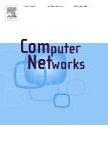版权所有:内蒙古大学图书馆 技术提供:维普资讯• 智图
内蒙古自治区呼和浩特市赛罕区大学西街235号 邮编: 010021
T=题名(书名、题名),A=作者(责任者),K=主题词,P=出版物名称,PU=出版社名称,O=机构(作者单位、学位授予单位、专利申请人),L=中图分类号,C=学科分类号,U=全部字段,Y=年(出版发行年、学位年度、标准发布年)
AND代表“并且”;OR代表“或者”;NOT代表“不包含”;(注意必须大写,运算符两边需空一格)
范例一:(K=图书馆学 OR K=情报学) AND A=范并思 AND Y=1982-2016
范例二:P=计算机应用与软件 AND (U=C++ OR U=Basic) NOT K=Visual AND Y=2011-2016
In this thesis, we introduce the distributed Learning Classifier System (DLCS) as a novel extension of J. H. Holland’s standard learning classifier system. While the standard LCS offers effective real-time control and learning, one of its limitations is that it does not provide a mechanism for allowing communication between LCS agents in a multiple-agent scenario. Often multiple-agents are used to solve large tasks collectively by subdividing the task into smaller parts. Multiple agents can also be used to solve a task in parallel so that a solution can be arrived at more rapidly. With the DLCS, we introduce mechanisms that satisfy both of these cases, while still providing compatible operation with the LCS.
We introduce three types of messages that can be passed between DLCS agents. The first, the classifier message, allows agents to share learned information with one another, thereby helping agents benefit from each other’s successes. The second, the action message, allows agents to "talk" to one another. The third, the bucket brigade algorithm payoff message, extends the chain rewarding payoff scheme of the standard LCS to multiple DLCS agents.
Finally, we present some simulation results for both the standard LCS and the DLCS. Our LCS simulations examine some of the important aspects of learning classifier system operation, as well as illustrate some of the shortcomings. The DCLS simulations justify the distributed architecture and suggest future directions for achieving learning among multiple agents.







电话和邮箱必须正确填写,我们会与您联系确认。
版权所有:内蒙古大学图书馆 技术提供:维普资讯• 智图
内蒙古自治区呼和浩特市赛罕区大学西街235号 邮编: 010021

暂无评论